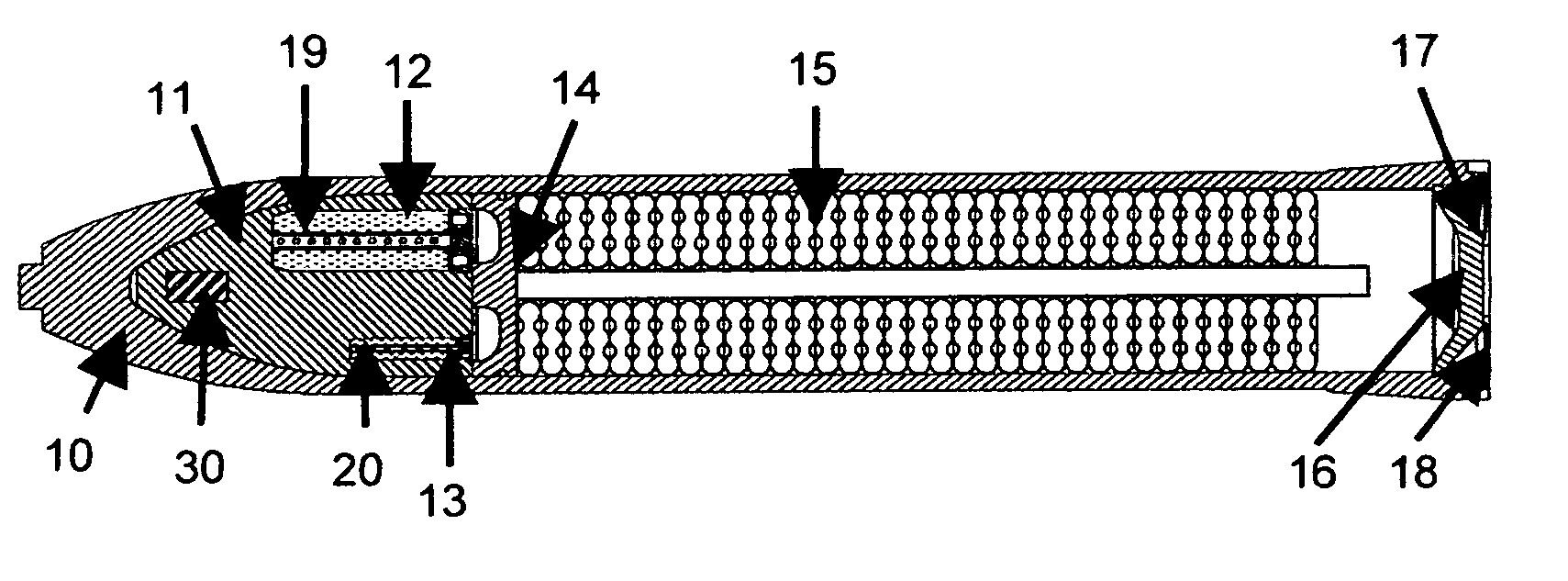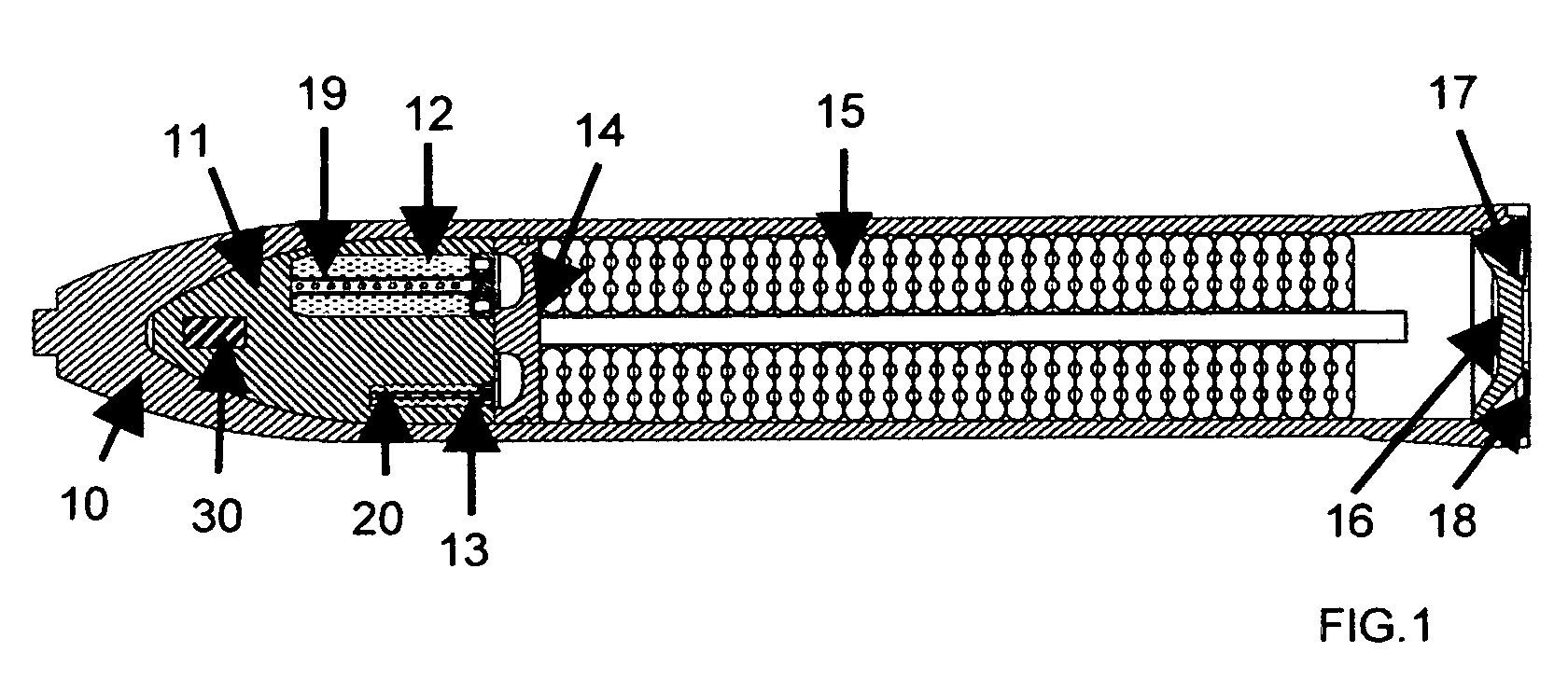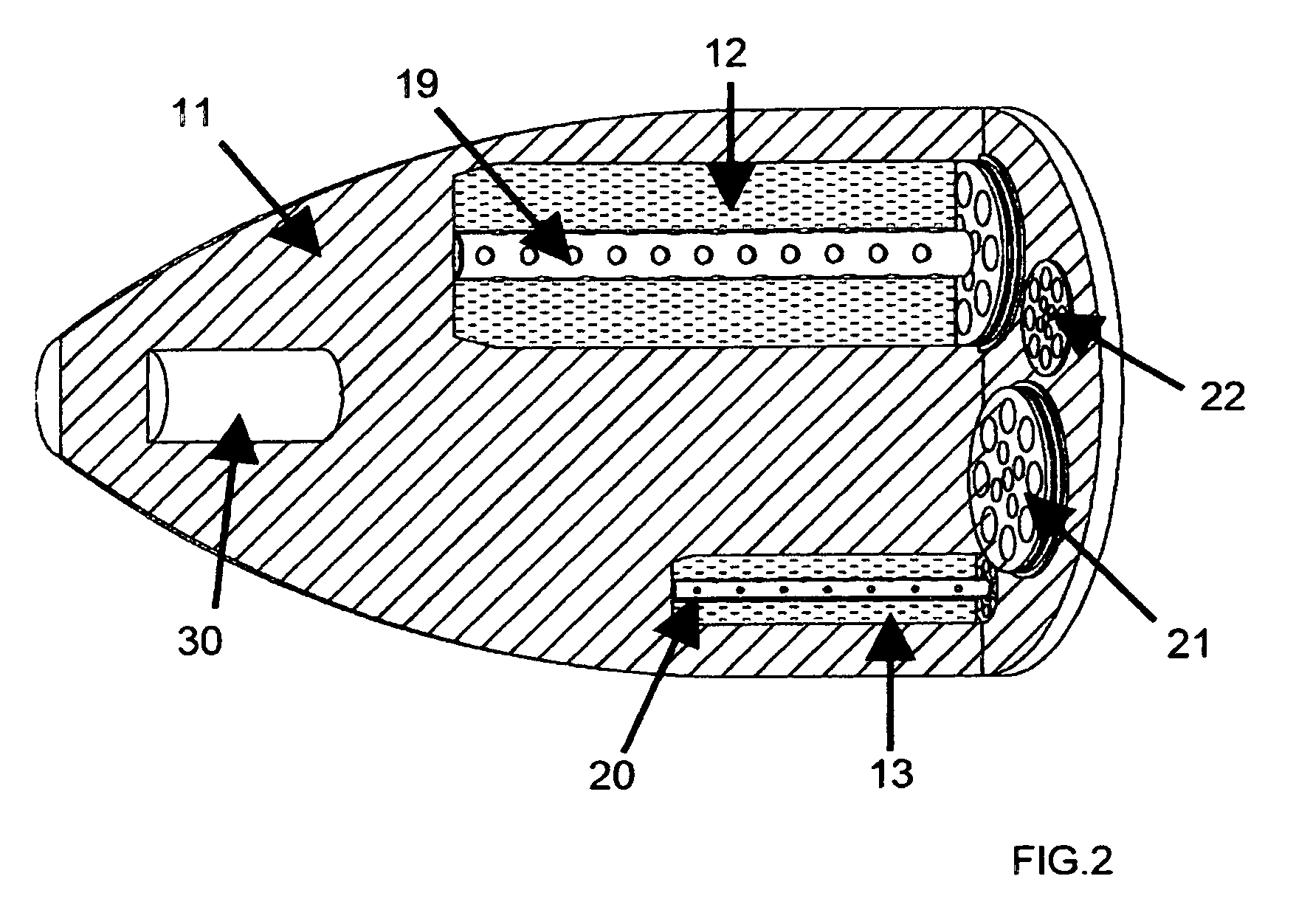Payload expulsion system for deep-target penetrators
a technology of deep-target penetrators and expulsion systems, applied in the field of deep-target penetrating munitions, can solve the problems of collateral damage, payloads that cannot be deployed where intended in the interior of the facility,
- Summary
- Abstract
- Description
- Claims
- Application Information
AI Technical Summary
Benefits of technology
Problems solved by technology
Method used
Image
Examples
Embodiment Construction
[0019] Referring more particularly to FIG. 1, the front of the nose cone 10 is a hardened, massive part of the penetrator casing. The nose cone contains the propellant charge holder 11, which in turn houses multiple fractional propellant charges 12, 13. Each fractional charge is preferably a granular propellant substance with igniter tubes or channels 19, 20 at the centers of these fractional charges. The granular propellant is consolidated to form rigid propelling charges to fit exactly into the charge cavities within the propellant charge holder 11. Propellant consolidation into rigid structures may be accomplished using a process in which the propellant is coated during the last stage of its manufacture with a special thermoplastic material that becomes soft and sticky at elevated temperature. Consolidation occurs by placing heated propellant into a mold and compressing it axially until the proper compaction density is achieved. The consolidation process compacts and bonds the pr...
PUM
 Login to View More
Login to View More Abstract
Description
Claims
Application Information
 Login to View More
Login to View More - R&D
- Intellectual Property
- Life Sciences
- Materials
- Tech Scout
- Unparalleled Data Quality
- Higher Quality Content
- 60% Fewer Hallucinations
Browse by: Latest US Patents, China's latest patents, Technical Efficacy Thesaurus, Application Domain, Technology Topic, Popular Technical Reports.
© 2025 PatSnap. All rights reserved.Legal|Privacy policy|Modern Slavery Act Transparency Statement|Sitemap|About US| Contact US: help@patsnap.com



